Welcome to the second instalment of our transformative travel journey across former European culture capitals! After Burgos, we visited Matera – here is a full list of things to do in Matera, including two great transformative travel experiences!
I remember the first time I saw a picture of Matera. It was 1990, I was 7 years old, and my grandparents had just return from a trip to the southern Italian city, to attend a wedding.
My grandfather showed me pictures of Matera’s famous Sassi, houses dug into the calcareous rock. ‘They look like cavemen’s homes’ I said – I was studying prehistory at school, and I was thrilled to see a real life ‘cave home’.
Little did I know back then, that I was right. Matera is one of the oldest continuously inhabited cities in the planet, after Aleppo and Jericho. Its caves have been home to people ever since the Paleolithic – for 9000 years, until everything changed about 70 years ago.
After World War II, the inhabitants of Matera still lived in the Sassi, in terrible conditions. Entire families lived in one or two cave rooms, with no electricity or running water, sometimes sharing the space with their own farm animals.
The dismal living conditions of Matera’s inhabitants became well known after the publication of Carlo Levi’s memoir, Christ stopped at Eboli.
Levi, an Italian painter, doctor, writer and activist, was exiled to Lucania (modern-day Basilicata, Matera’s region), and witnessed first-hand the harsh poverty of rural communities.
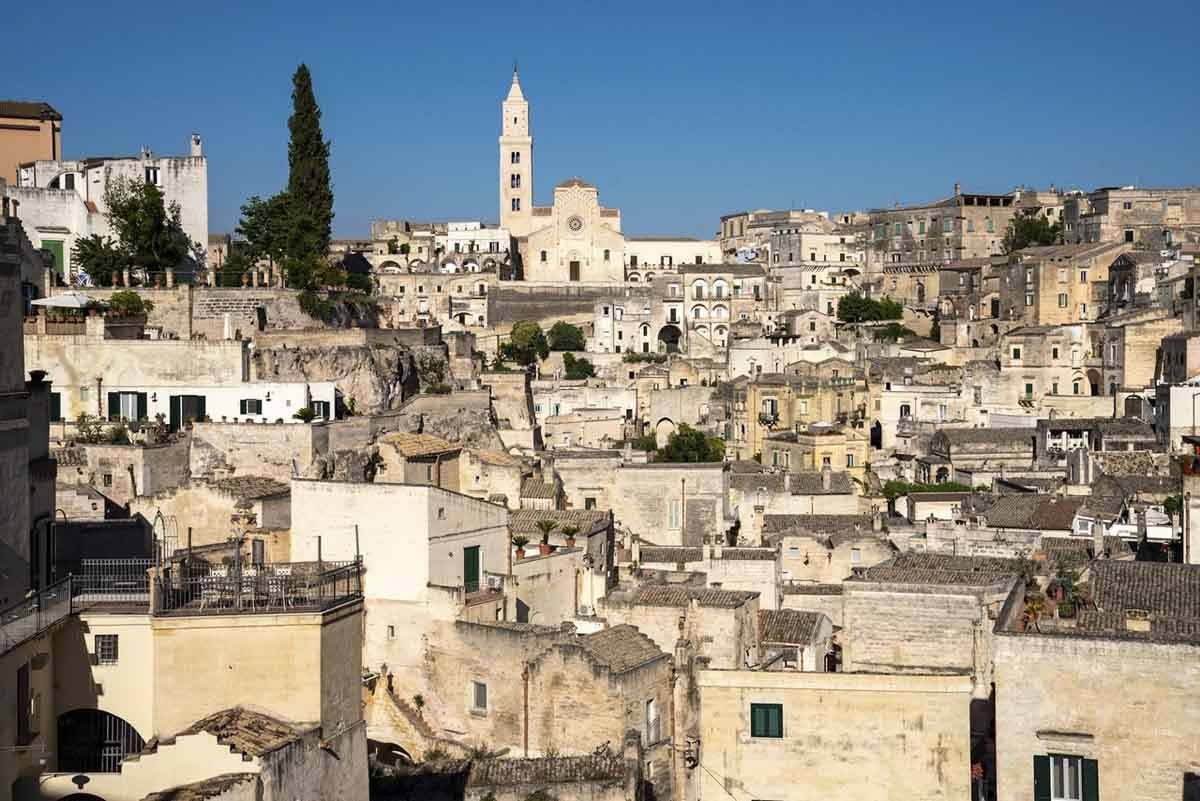
In the 1950s, Matera’s became known as ‘the shame of Italy’ – it was unbelievable that a country that was moving fast towards industrialisation still had people living in conditions of extreme poverty.
The entire population living in the Sassi was relocated to newly-built neighbourhoods, and the warren of caves lay neglected for decades – until they were slowly renovated, turned into modern homes, hotels, and boutique accommodation.
It’s impossible to explore Matera without mentioning the Sassi. In a way, the Sassi are Matera – they make up the bulk of the historic centre, and they are indeed what makes the city unique.
Matera became increasingly popular with tourists ever since it was used as a filming location for Passion of the Christ in 2004. The city was crowned European Culture Capital in 2019, and it was set to become a prime tourist location in Southern Italy… until 2020 happened.
Here is our guide of things to do in Matera, starting with two transformative travel experiences.
We recommend including at least one in your Matera itinerary, to better understand how the lives of so many people collectively shaped the history of this place.
Transformative Travel Experiences in Matera
1) Silent City Experience
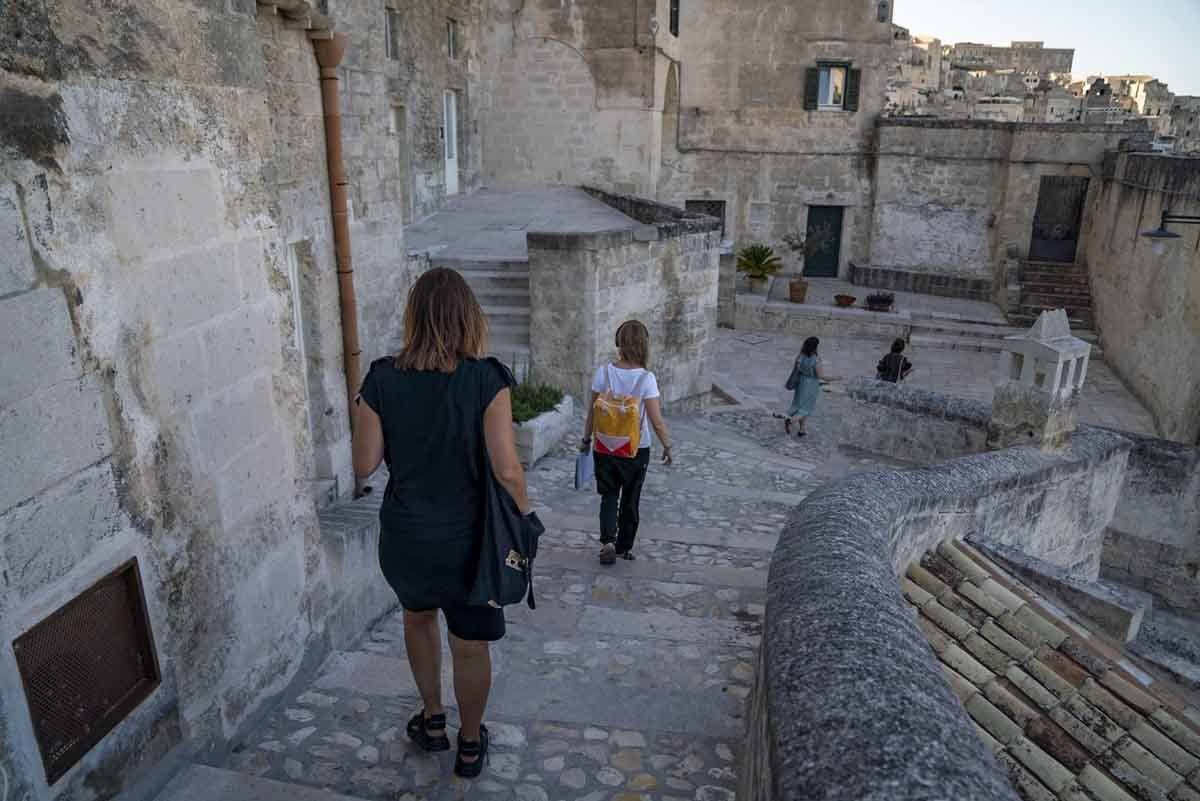
This Matera tour is unlike any we’ve ever taken. It was created by L’Albero Theatre Company, a group of actors, musicians and creative souls, who produced an opera titled Silent City, in occasion of the European Capital of Culture year.
The opera starts in the 1950s, with the forced relocation of Sassi dwellers to the newly-built neighbourhoods. A child becomes lost in the turmoil, and never leaves ‘the city below’.
Years later, he becomes a sort of guiding spirit for a group of schoolchildren visiting the Sassi, heading off for an adventure.
The Silent City Experience invites travellers to follow in these children’s footsteps, exploring the Sassi not just as a place, but as a product of collective history – adding to this shared narrative as they craft their own story about Matera.
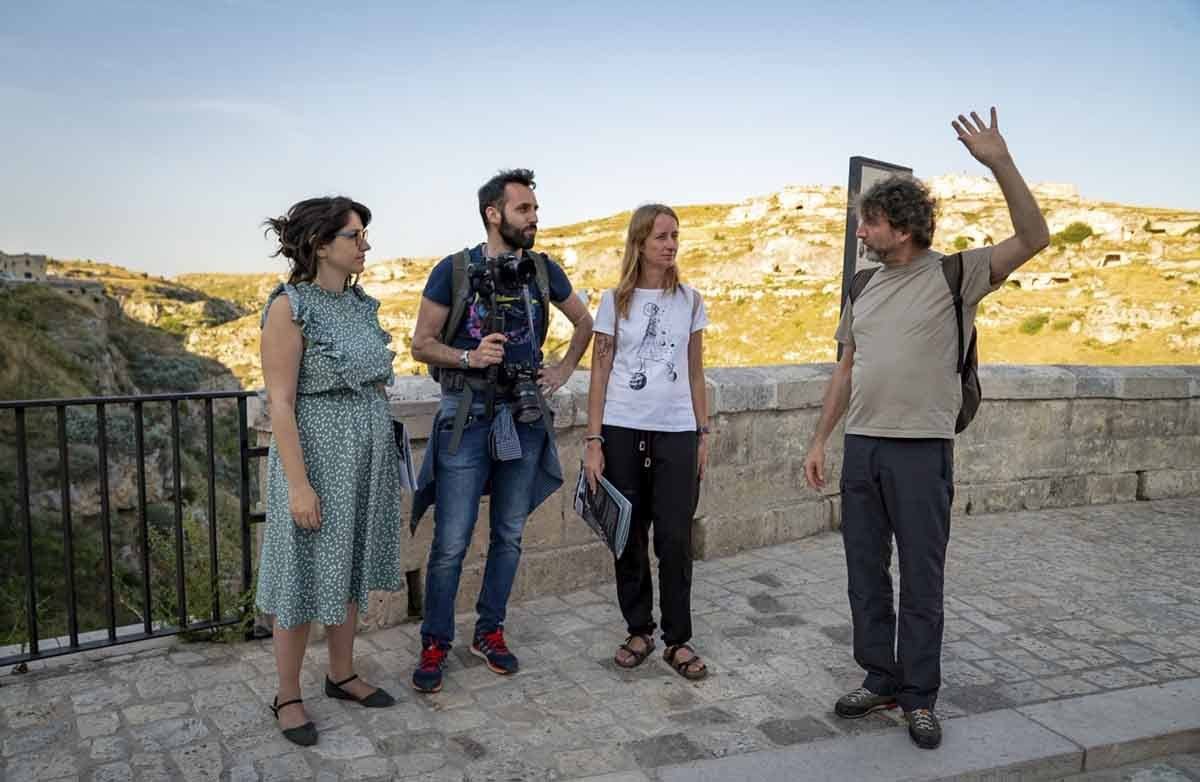
Guided by an artist, visitors are taken to various locations around the Sassi, asked to explore with all 5 senses and undertake a series of creative tasks. As a final ‘homework’, you’ll be asked to put all the elements you’ve collected together, and write a short story.
You’ll be given am illustrated booklet to write your story and do all the tasks, which becomes a wonderful Matera souvenir to take home!
2) Visit Wonder Grottole
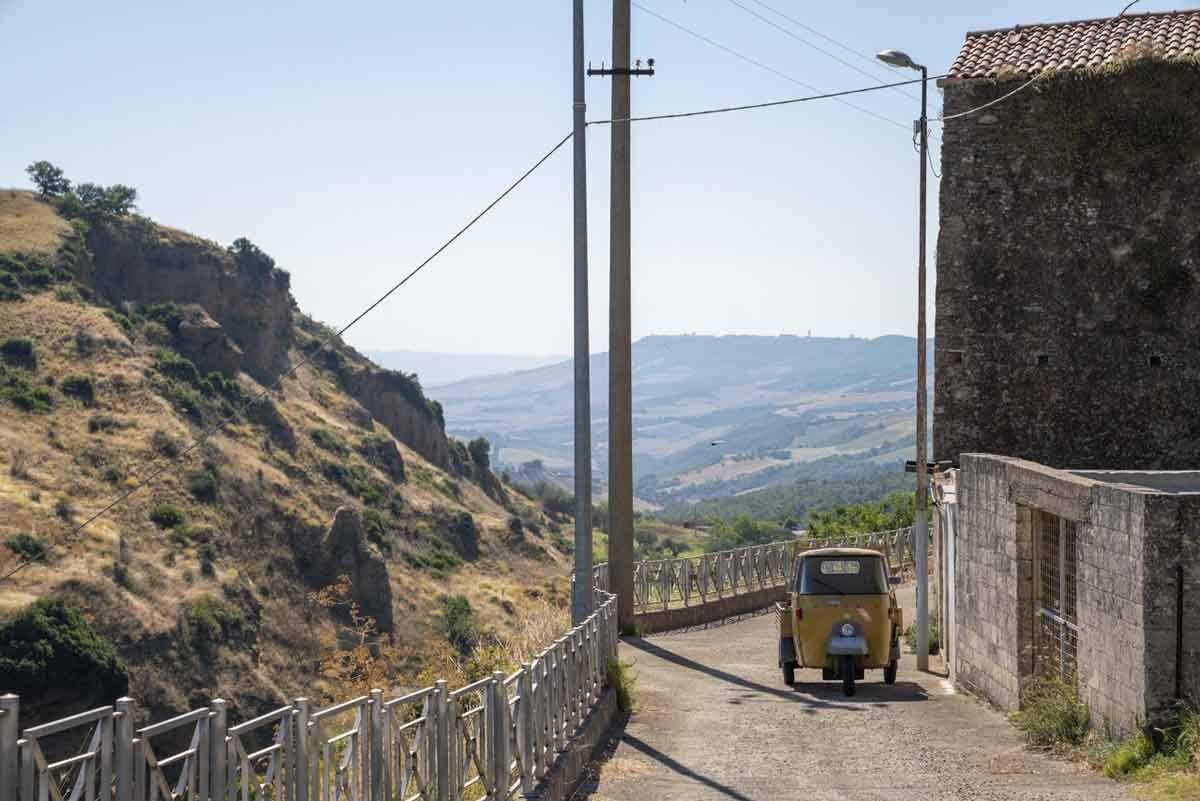
The second transformative travel experience doesn’t actually take place in Matera, but in nearby Grottole, a village of 2000 people about 20 minutes drive away.
Grottole is one of many villages in Southern Italy hit hard by depopulation, as young generations move to larger cities in search of work. The centre of the town stands nearly empty, with rows of derelict houses, inhabited mainly by older people.
Yet, this is where Grottole is different. Instead of crying over a glorious past, or putting dubious offers of ‘€1 homes’ on the market, a group of young residents created the Wonder Grottole concept – a house for travellers to stay at for longer periods of time, from 1 week to 1 month or more.
BTW, if you think you’ve heard of Grottole before, it’s because it was the Italian village where the Airbnb Sabbatical project took place in the summer of 2019!!
Included in the house rental price, visitors have the chance to join experiences led by locals.

You can learn about bees with Rocco, the resident town barber and beekeeper; take a nature walk with Paolo, who runs a restaurant in a protected reserve; discover extra virgin olive oil with Vincenzo, fifth-generation olive farmer; take an Italian class with Silvia with ‘practical challenges’ such as ordering your own coffee or asking locals for a selfie.
The idea is promoting creative exchange between locals and travellers. Travellers get to enjoy the village, become temporary members of the community, and enjoy ‘slow life’. Locals are happy to welcome travellers, and meeting people from other ways of life often gives them ‘creative boosts’ for their own businesses.
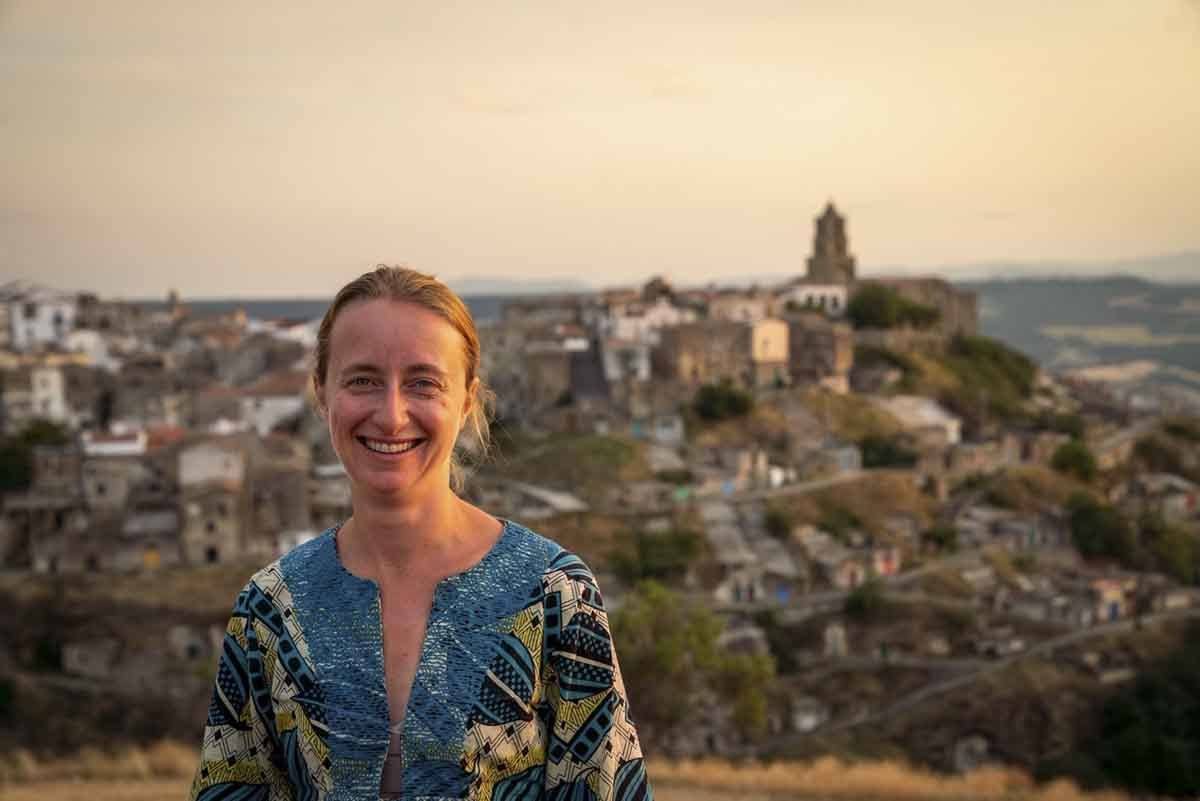
Other Things to do in Matera
3) Explore the Sassi
The historic centre of Matera is made of two Sassi, Sasso Barisano and Sasso Caveoso, divided by a rocky outcrop known as Civita.
The two Sassi are a maze of caves, passages, alleyways, staircases, courtyards – you never know what to find around corners. There are busy squares and secluded corners, backstreets with cats napping on whitewashed walls… it’s the kind of place that is best explored with no set itinerary, following your footsteps and imagination.
Sasso Barisano is where you’ll find Piazza Vittorio Veneto and Via Ridola, with many bars and restaurants. Generally speaking, it’s the liveliest part of town, wheras Sasso Caveoso is quieter and less ‘developed’ in terms of tourist-oriented places.
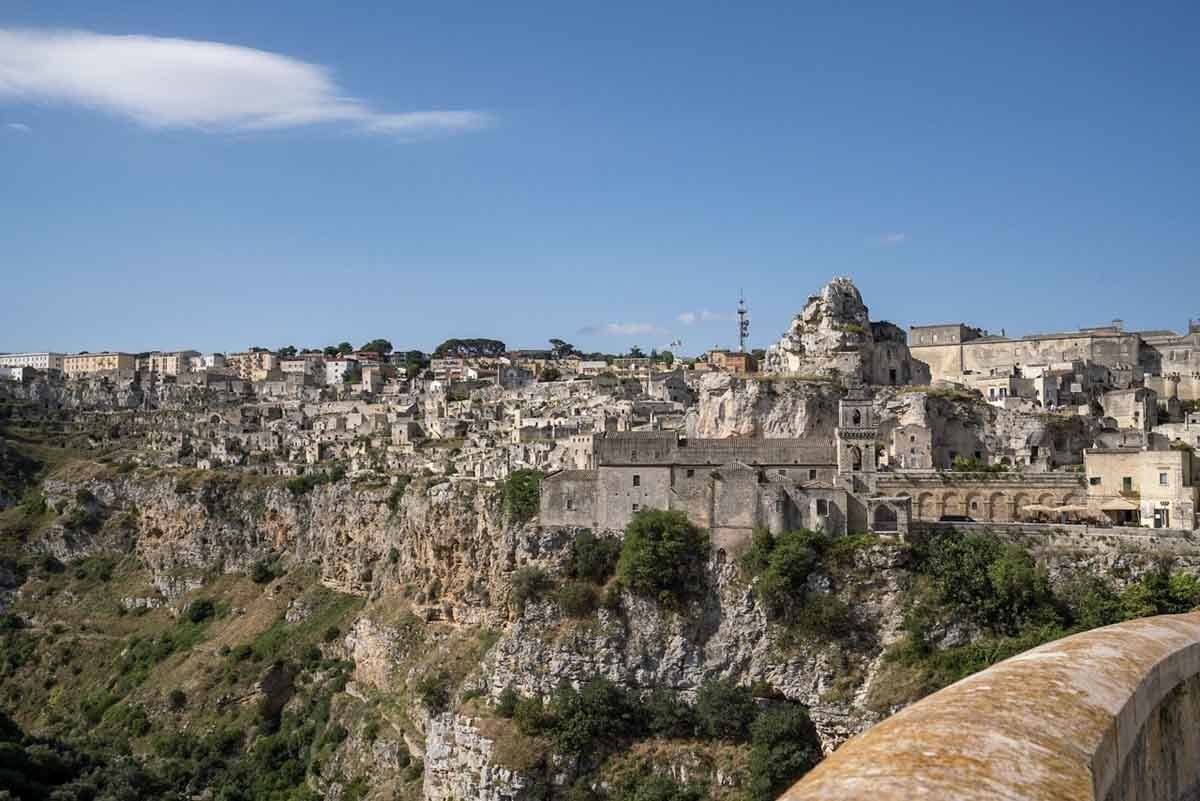
Both Sassi as worth visiting, as is the Civita, where you can see the Duomo and enjoy great views over the city.
If you are visiting in summer, be warned that Matera gets unbearably hot during the late morning and early afternoon. Try to explore in the early morning (best if you want to avoid the crowds), or at sunset time (magical but busy). Better still, visit in Spring – March is a pleasant month, with moderate temperatures and not many tourists!
Exploring at night is also an option. The Sassi are all lit up, as they have been for many centuries. It is argued that the name ‘Matera’ comes from the Ancient Greek ‘meteoron’, meaning starry sky. Sassi inhabitants were used to placing oil lamp in front of their doors, making it look as if the sky and earth had switched places.
4) Stay in a Cave Hotel
It may be pricey, but you simply MUST stay in a Sassi hotel when in Matera.
There are plenty to choose from – if your budget stretches far enough, we highly recommend Sextantio – Grotte della Civita, a luxury hotel in a former monastery, with original stonework and a peaceful, meditative atmosphere.
A more affordable experience is Fra i Sassi Residence, where we got to stay. Fra i Sassi offers 9 uniquely-decorated rooms, with top views over Sasso Caveoso and boutique touches such as bathtubs where you can play music via Bluetooth. They also serve a wonderful breakfast, with ingredients sourced from local producers.
Owner Cristina is an architect passionate about accessibility, and she put together an accessible travel map of Matera – a real feat, in a town that is all cobblestones and staircases.
If you are planning to stay in Matera for longer, there are plenty of Sassi options on Airbnb – here are a couple!
- Le Dodici Lune – perfect for a group of friends!
- Maison des Vents – overlooking Sasso Caveoso, in an offbeat Sassi backstreet.
- Terra Mater B&B – a stylish option combining design with rustic elements
5) Visit a Home in the Sassi
If you were curious to experience life in cave homes, definitely add visiting one to your list of things to do in Matera!
There are a few places where you can visit a sassi home. One of them is Casa Grotta in Vico Solitario, located in Sasso Caveoso, where people lived up to 1956. Here you can see how people and animals lived together – the rooms you can visit include not just the kitchen and bedroom, but also two stables.
Another great place to see a cave house is Casa Noha, in the same square as the Duomo. The house was donated to FAI when the owners passed away, and in addition to seeing five rooms with original furniture, you can also watch a video, retracing the Sassi’s millenary history.

6) Visit the Duomo
Cathedrals are often found on ‘best of’ lists all over Italy, and Matera is no exception. The Duomo (meaning cathedral) of Matera is dedicated to Sant’Eustachio and to the Madonna della Bruna, the two patron saints of the town.
The church lies on the highest point of the Civita, the rocky spur between the two Sassi that make up Matera’s historic centre. It was built in Apulian Romanesque style in the 13th century, on the site of a former Paleochristian place of worship.
With such a linear, essential Romanesque façade, the interiors of the Duomo may come as a surprise – decorative elements were added in 16th and 17th century, with Baroque and Renaissance influences.
If you can, try to visit Matera in occasion of the Madonna della Bruna festival on July 2nd, when a statue depicting the Virgin Mary is taken all over Matera in a decorated carriage. The festival is celebrated with a big street parade that turns into a party, and all the narrow streets and alleyways around the Sassi are lit up with colourful lights.

7) But Don’t Forget Other Churches!
After cave houses, it comes as no surprise that Matera has loads of cave churches – about 150, to be exact. Visiting one or more cave churches should definitely be on your list of things to do in Matera!
The largest cave church is San Pietro Barisano. The façade was hewn from the calcareous stone, while the inside was almost entirely excavated. The church was built in the 12th century and renovated several times – inside you can see large pools where bells were forged, and subterranean tunnels where the corpses of clerics were embalmed. Perfect if you’re into creepy sights!
Other notable cave churches in Matera include Santa Maria de Idris, on a rocky outcrop above Sasso Caveoso, Madonna delle Virtù with an elaborate two-story structure, and Santa Lucia alle Malve, which was home to Matera’s first nunnery.
Two other cave churches are worth a visit, but you’ll need a car to get there – Cripta del Peccato Originale, sometimes referred to as the Sistine Chapel of cave churches, and Madonna delle Vergini, overlooking Matera.
8) Check out the Views
Well, I guess that comes as no surprise – Matera is full of amazing views!
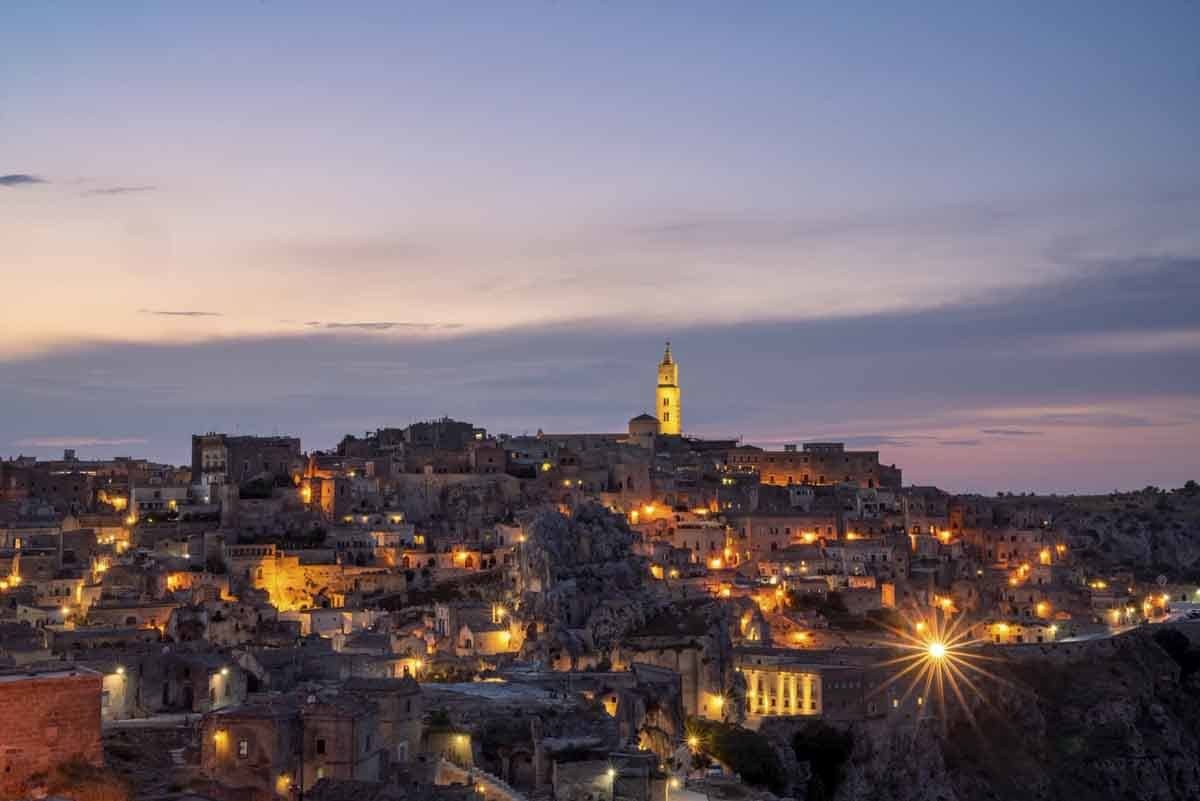
One of the best photo spots is right in Piazza Vittorio Veneto, the largest in town – I’m talking about Belvedere Luigi Guerricchio, a balcony on the other side of three arches right next to the Mater Domini church.
Other great places to visit for pictures are Piazza Duomo, Via Madonna delle Virtù, and the square just opposite the Madonna de Idris church.
However, for the best views EVER of Matera… keep reading!
9) Visit the Park of Rupestrian Churches (Parco della Murgia Materana)
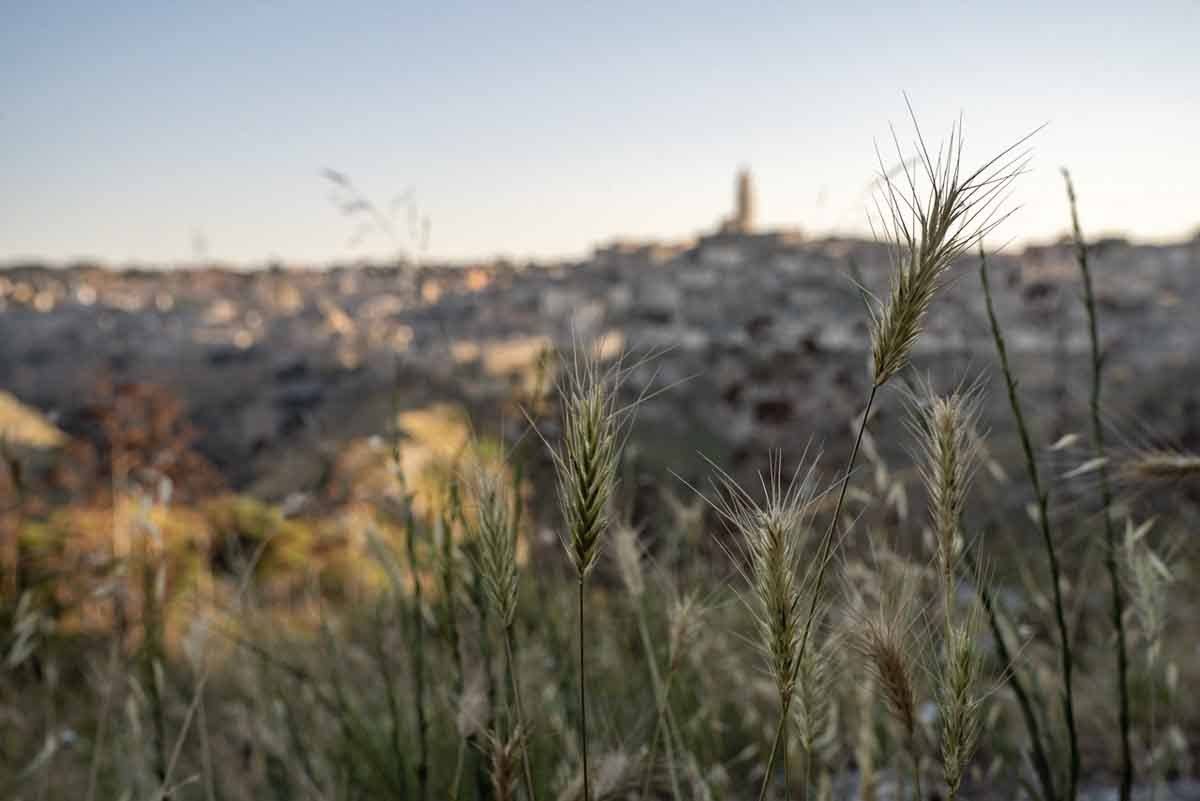
On the other side of the Gravina (canyon) running right next to Sasso Caveoso, you’ll find the Parco della Murgia Materana, worth a visit for two reasons – its stunning rupestrian churches, and VIEWS!
You’ll find over 100 cave churches spread over a territory that reaches the border with the nearby Puglia region. Some of the churches are very simple, others are decorated with frescos or engravings. We recommend visiting with a guide, as you’ll need a car to get around.
Also, make sure you add the Belvedere di Murgia Timone to your list of things to do in Matera! It’s located in the park, only a few km from Matera, but once again you’ll need a car to get there. Try to visit for sunrise or sunset!
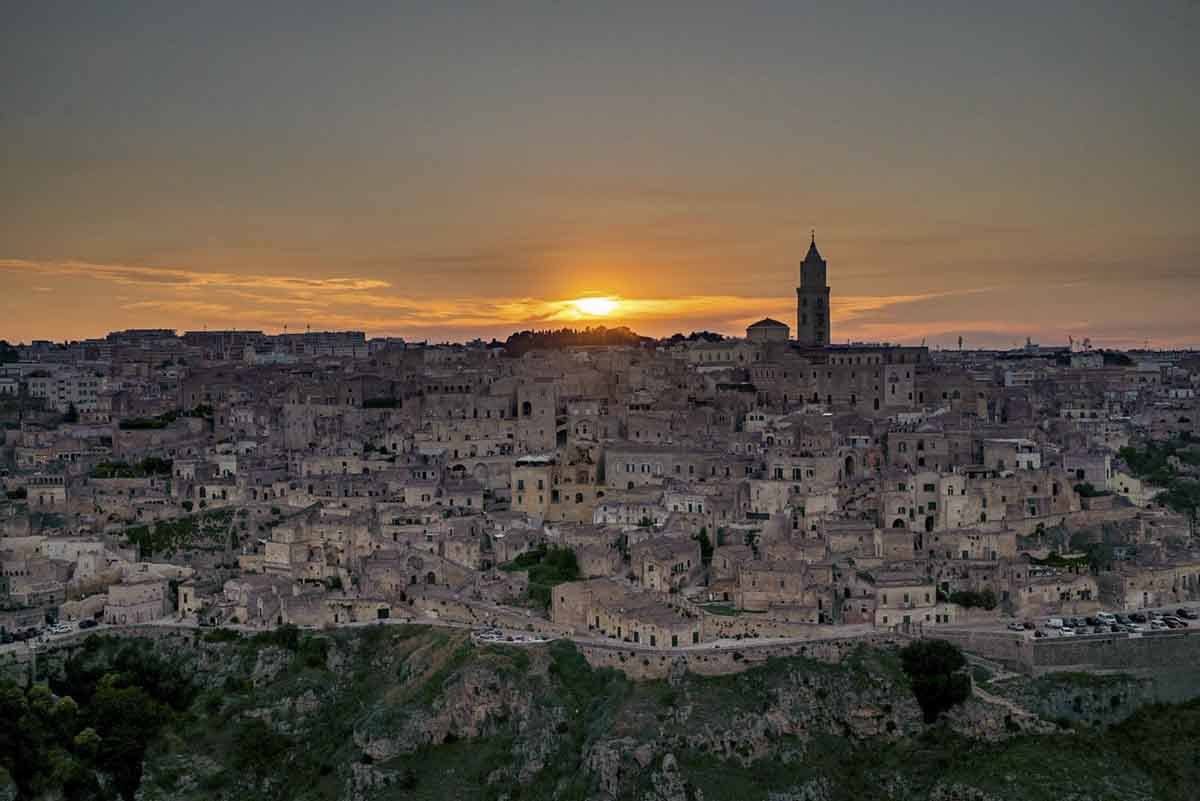
10) Visit the MUSMA
Not visiting this museum is my #1 regret, and the item right at the top of my things to do in Matera list for our next visit!
The MUSMA is a contemporary sculpture museum set in a 16th century cave palazzo in the heart of Sasso Caveoso. Artworks are chosen specifically to be exhibited in set locations, in order to give the viewer a sense of harmony. If you can, don’t miss it!
11) Check out the Cisterns
Lovers of unusual, ‘dark’ sites, take note of this Matera attraction!
The Palombaro Lungo cistern is located right in Piazza Vittorio Veneto. It was dug out in 1870, to provide a drinking water reservoir for the city and its inhabitants.
It is also known as ‘cattedrale dell’acqua’ (water cathedral) because of its imposing, curved walls, in contrast with the green/turquoise water. You can visit with guided tours taking you over boardwalks all the way to the water, but how amazing would it be if you could dive as well?
12) Enjoy Traditional Matera Food
Yes, no things to do in Matera list is complete without a mention of its traditional food, including specialties rarely found elsewhere.
Let’s start with Matera bread, made with durum wheat flour following a process that dates back centuries. It’s eaten as is, as an accompaniment to meats and cheeses, or as a base for dishes like polpette di pane, bread balls cooked in tomato sauce, or cialledda, a summer salad made with bread, cucumbers, tomatoes and onions.
Another traditional specialty found in Matera are peperoni cruschi, sun-dried red peppers which are then fried to a crispy, crunchy consistency. They are usually added to salads or pasta dishes, or eaten as they are as part of mixed antipasti.
Due to Matera’s vicinity to Puglia, you’ll also find Apulian dishes in many restaurants – like orecchiette, pasta shaped like tiny ears and often served with cime di rapa (turnip greens), or fave e cicoria, fava bean puree topped with bitter greens.
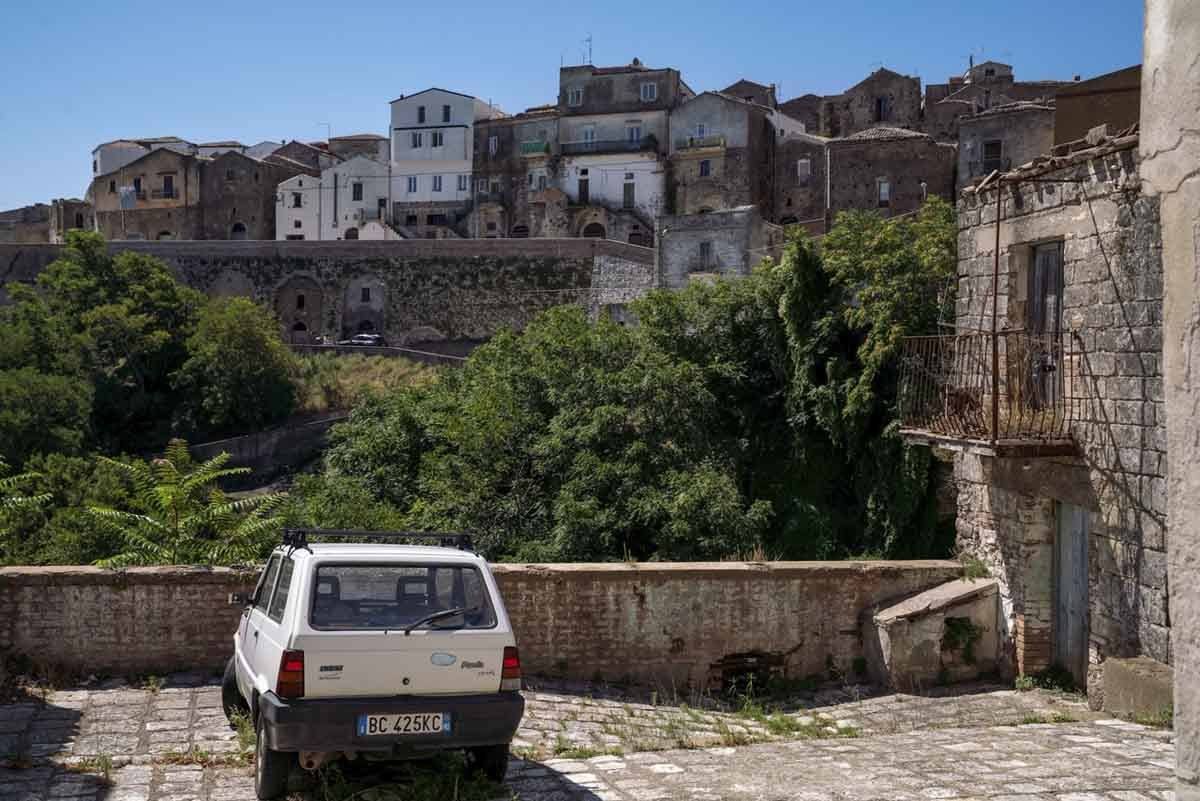
How to Get to Matera
-By Plane: the closest airport to Matera is Bari. From there, you can take shuttle buses, departing every hour or so, and taking about 50 minutes to reach Matera.
-By Train: if you want to get to Matera by train, you’ll also have to make your way to Bari. Then, you can take the Ferrovie Appulo Lucane from the Bari FAL station located opposite Bari Centrale. Travel time is just over an hour.
-By Car: travelling to Matera by car is a good idea, as it gives you the opportunity to visit the Murgia easily, but be warned that parking in town is an absolute nightmare! The Sassi areas are entirely pedestrian, and parking space around town is in VERY short supply.
Your best bet will be booking a hotel with parking spots, or in an agreement with a nearby garage. Expect to spend about €15 per day to park your car.
Our visit to Matera was part of the TraCEs – CultourIsCapital project, funded by the European Commission under the COSME programme. We would like to thank Paolo and Raffaele from MateraHub, and all the local operators we met during our time in Matera and Grottole!
Would you like to know more about our other transformational journeys? You’ll find them here!
